Well I finally got some nice Seas Drivers for a workshop active crossover build.
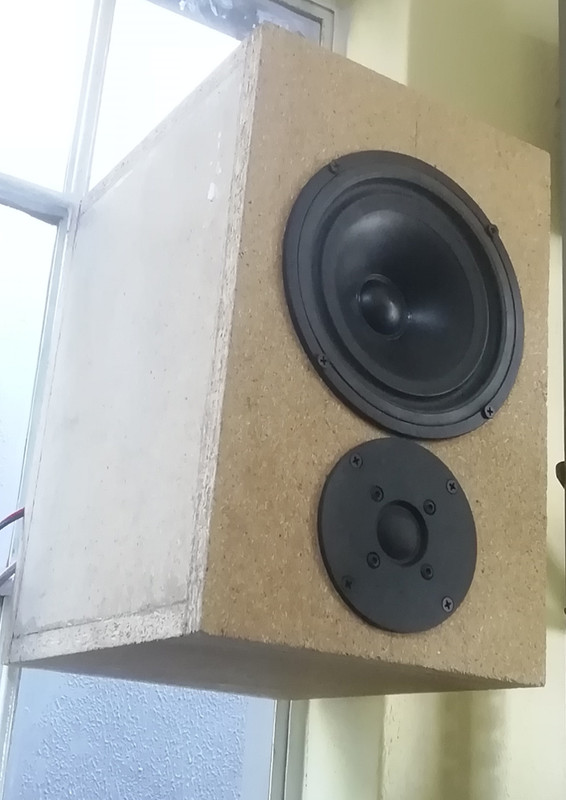
The Drivers were originally from a pair of Musical fidelity MF40s.
Thank you Facebook marketplace.
If anyone is interested in a single MF40 case, let me know
The midbass drivers are Seas P17RC4Y H 509
Unfortunately one driver was open circuit, so no D'Appolito for me. But I also need to have it installed behind / above my monitor. So, size mattered and tweeter at the bottom made sense to try keep it closer to ear height.
The cases made as a test set out of chipboard I had lying around. Lets see how long it takes to replace with pretty cases, I suspect some on this forum won't live long enough to see that.
A sealed system was chosen for tight control, a sub or pre equalization could compensate for the early bass falloff.
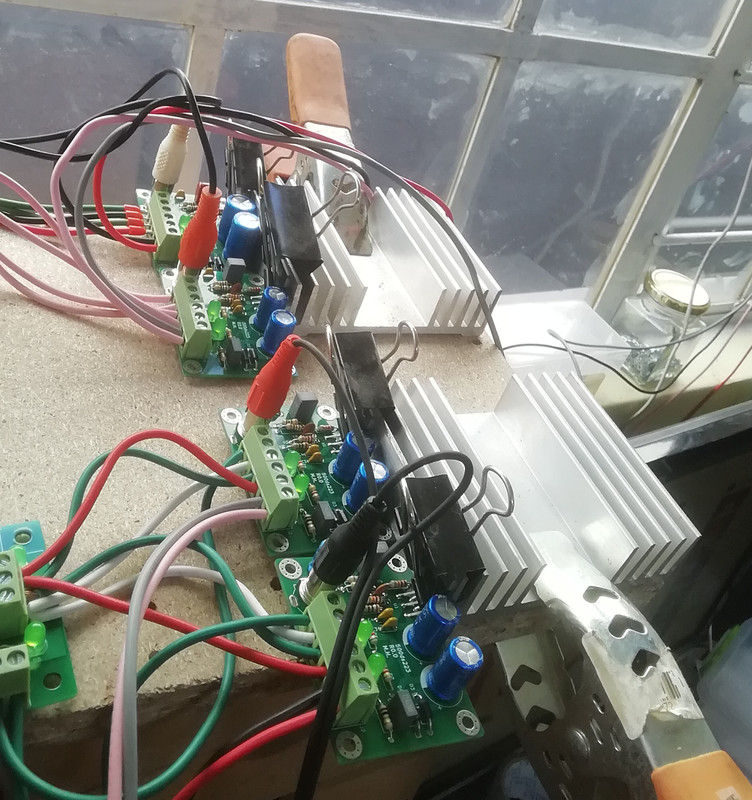
Amps are my LM1875 PCBs.
I picked up a tube of chips so i may as well use them. Also, 20W is more than enough for what I need. Good PC audio while working.
Actively driving these drivers individually works great. The sound is tight and controlled. As a bonus, having a separate amp for the tweeters helps protect against clipping as the highs don't have to ride on top of the lows as is the case with passive crossovers. Using pre compensation only increases this threat to tweeters.
Ideally these systems, power supplies, crossovers, amps and heatsinks get mounted on the enclosures. Turning them into active monitors.
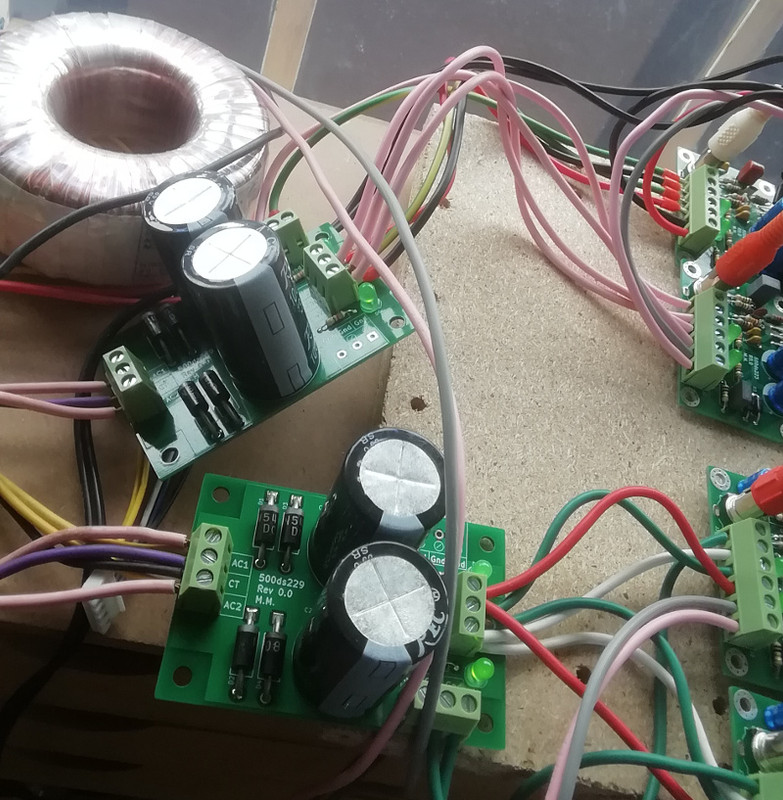
The PSU boards are my own PCBs, a torroidal transformers provide the AC. Ideally 2 independent PSUs are needed for each channel, one for each amplifier driver as this reduces ground loop potential, but It seems to be working well as is at the moment.
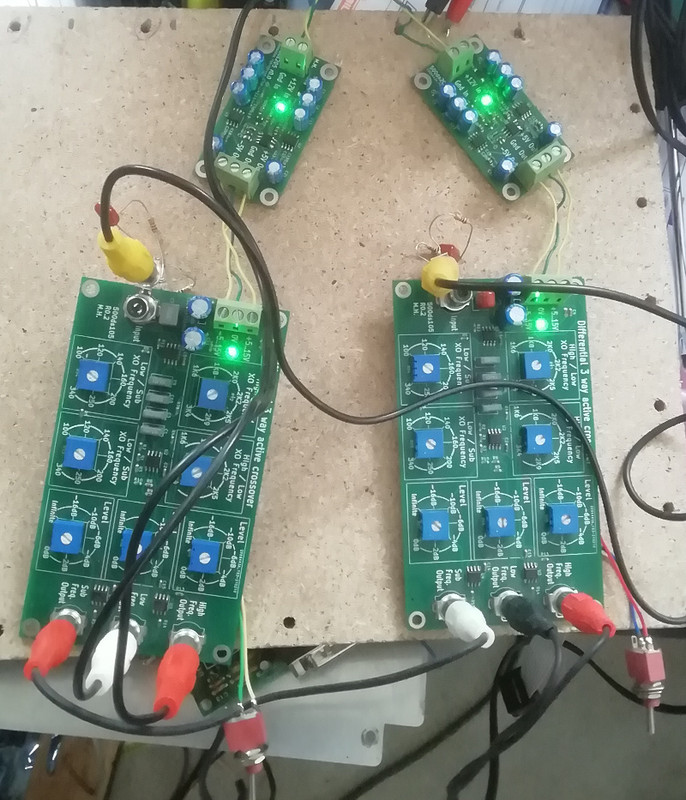
The crossovers are 3 way active crossovers Tweeter, Mid/Base and Sub. After testing I decided to disable the sub section and simply pre equalize the signal before entering the crossover. The addition of the sub appeared to increase listener fatigue. Probably phase related, as I am very close to the drivers. The equalization is provided by 2 resistors and a cap. Ideally I need to have a buffer amp precede the EQ, but for the purposes of the test this will do.
The active crossovers worked like a dream. No balancing concerns, just turn the pot to the frequency you want. I chose 2KHz as a good place. Also the Level controls on the outputs make driver efficiency matching as easy as twisting a screwdriver.
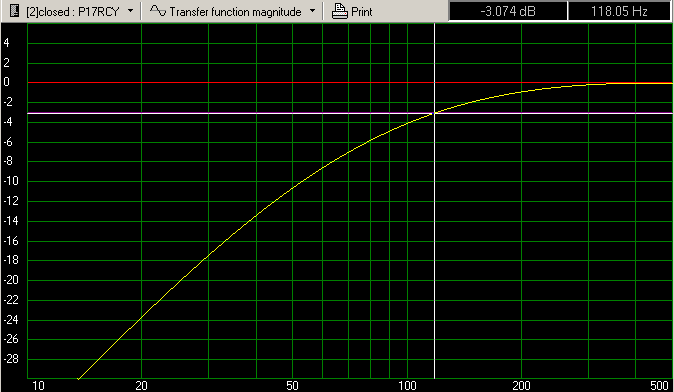
Here is the Win IDS plots for the 14 liter enclosure, although in retrospect, a much smaller enclosure could have worked. These dimensions were chosen so-that a bass reflex system could be constructed, but I'm now convinced of the infinite baffle + pre compensation route. Less volume, better control. I don't need 100W from these drivers. considering my seating position, 5 is probably enough.
The RCR circuit provides a bass boost in the form of suppressing everything else.
I was a little concerned about losing 24dB or so off the noise figure, but those LM4562 op amps are pretty impressive little op amps and so far, so good.
Here is an LT spice plot of the pre eq.
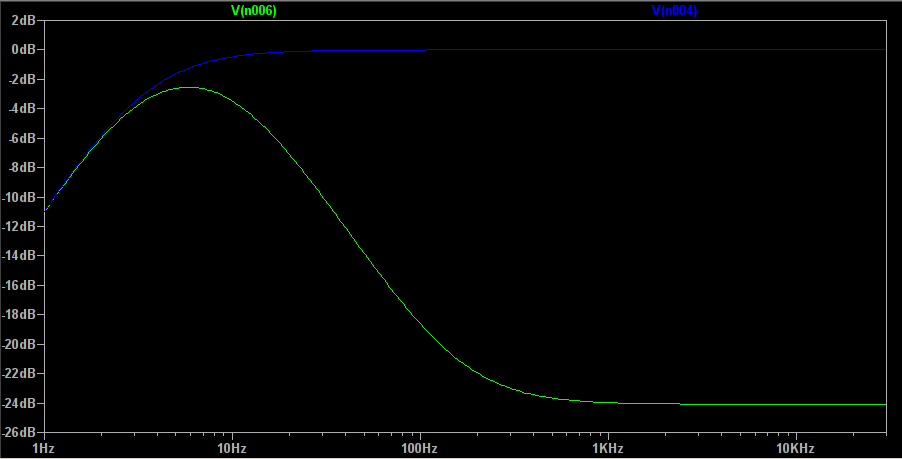

The Drivers were originally from a pair of Musical fidelity MF40s.
Thank you Facebook marketplace.
If anyone is interested in a single MF40 case, let me know
The midbass drivers are Seas P17RC4Y H 509
Unfortunately one driver was open circuit, so no D'Appolito for me. But I also need to have it installed behind / above my monitor. So, size mattered and tweeter at the bottom made sense to try keep it closer to ear height.
The cases made as a test set out of chipboard I had lying around. Lets see how long it takes to replace with pretty cases, I suspect some on this forum won't live long enough to see that.
A sealed system was chosen for tight control, a sub or pre equalization could compensate for the early bass falloff.

Amps are my LM1875 PCBs.
I picked up a tube of chips so i may as well use them. Also, 20W is more than enough for what I need. Good PC audio while working.
Actively driving these drivers individually works great. The sound is tight and controlled. As a bonus, having a separate amp for the tweeters helps protect against clipping as the highs don't have to ride on top of the lows as is the case with passive crossovers. Using pre compensation only increases this threat to tweeters.
Ideally these systems, power supplies, crossovers, amps and heatsinks get mounted on the enclosures. Turning them into active monitors.

The PSU boards are my own PCBs, a torroidal transformers provide the AC. Ideally 2 independent PSUs are needed for each channel, one for each amplifier driver as this reduces ground loop potential, but It seems to be working well as is at the moment.

The crossovers are 3 way active crossovers Tweeter, Mid/Base and Sub. After testing I decided to disable the sub section and simply pre equalize the signal before entering the crossover. The addition of the sub appeared to increase listener fatigue. Probably phase related, as I am very close to the drivers. The equalization is provided by 2 resistors and a cap. Ideally I need to have a buffer amp precede the EQ, but for the purposes of the test this will do.
The active crossovers worked like a dream. No balancing concerns, just turn the pot to the frequency you want. I chose 2KHz as a good place. Also the Level controls on the outputs make driver efficiency matching as easy as twisting a screwdriver.

Here is the Win IDS plots for the 14 liter enclosure, although in retrospect, a much smaller enclosure could have worked. These dimensions were chosen so-that a bass reflex system could be constructed, but I'm now convinced of the infinite baffle + pre compensation route. Less volume, better control. I don't need 100W from these drivers. considering my seating position, 5 is probably enough.
The RCR circuit provides a bass boost in the form of suppressing everything else.
I was a little concerned about losing 24dB or so off the noise figure, but those LM4562 op amps are pretty impressive little op amps and so far, so good.
Here is an LT spice plot of the pre eq.

